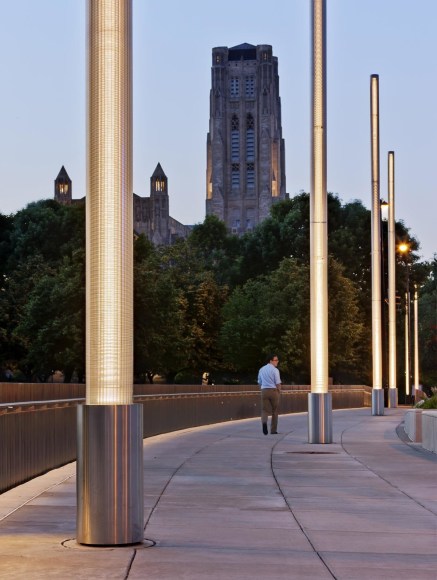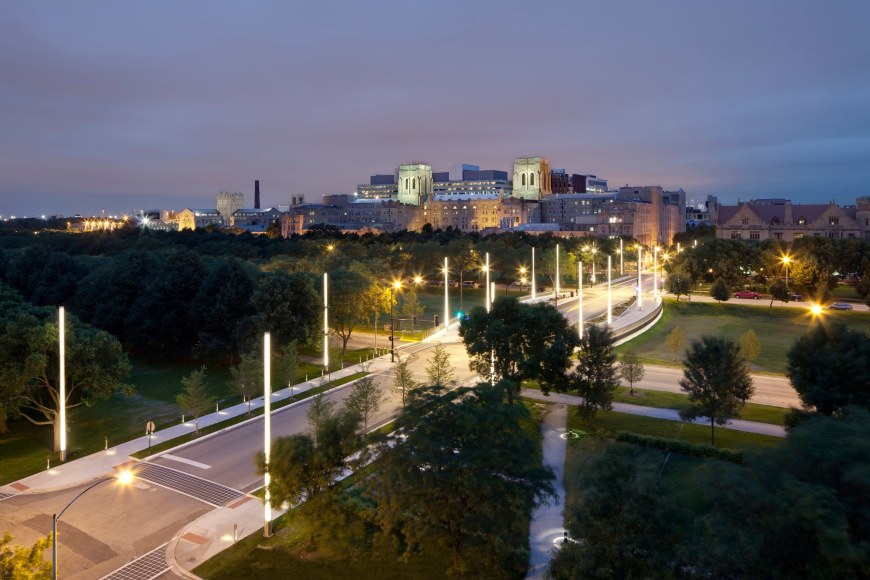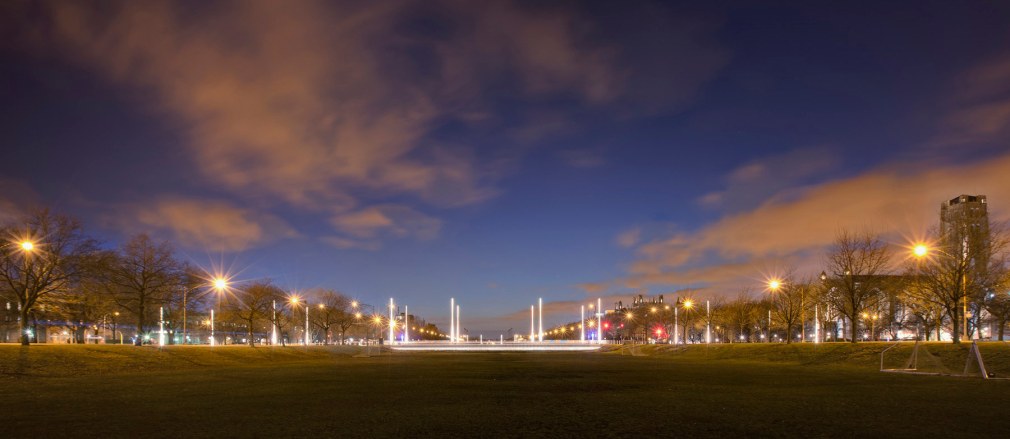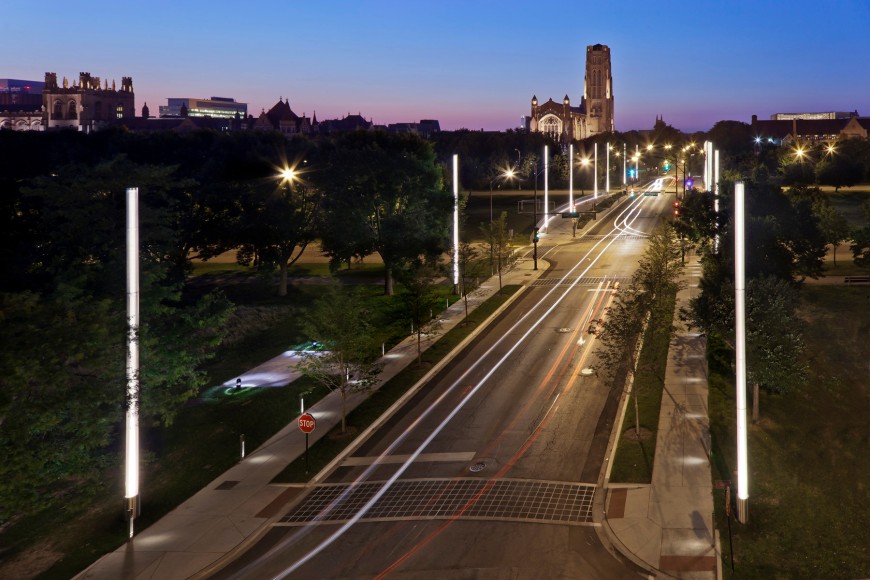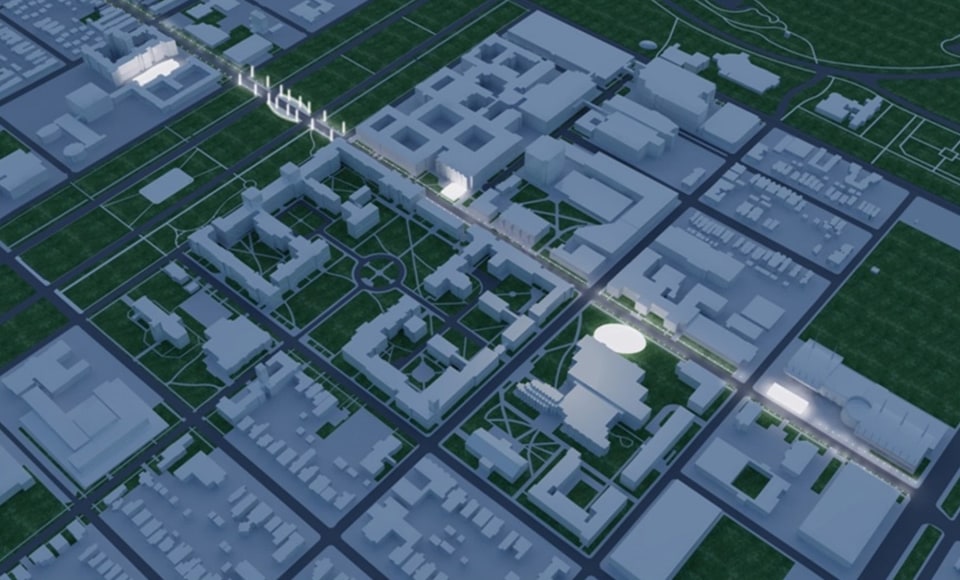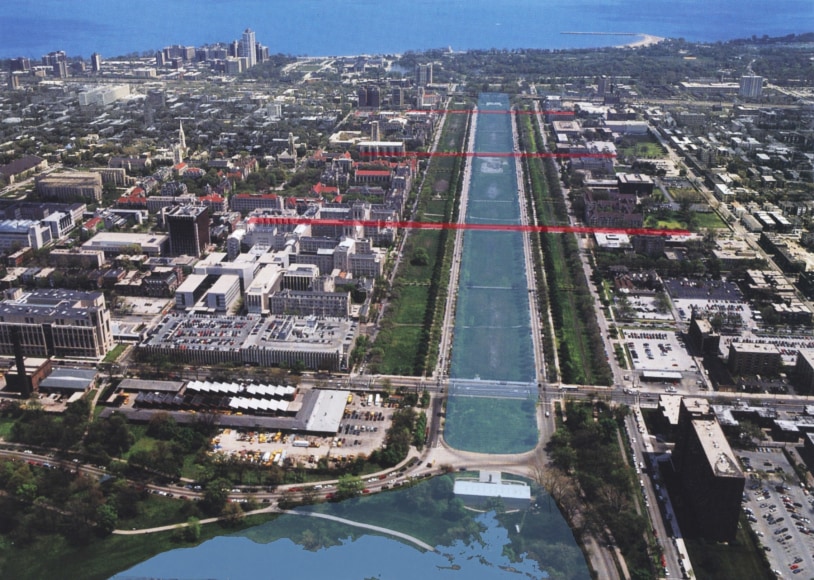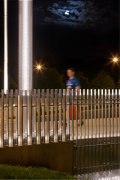Engaging with the park’s history to reactivate its use, the Midway Crossings establish coherent connections across Chicago’s Midway Plaisance.
MIDWAY CROSSINGS
UNIVERSITY OF CHICAGO, CHICAGO, USA
2014
BackImages
Video
Description
The Midway Crossings, a project for the University of Chicago and the Chicago Parks Department, grew out of the perception that this neglected historic site had become a barrier cutting through the University’s north and south campuses but more critically a barrier that separated the underserved South Side from the more affluent Hyde Park to the north. Students and the general public generally avoided this area at night. Effectively, the Midway had become a void at the center of these two neighborhoods and we were asked to develop a design that could change this perception.
The resulting bridge-like crossings speak to the historical significance of the site, originally designed and planned by Frederick Law Olmstead as a canal linking Lake Michigan to an inland lagoon. Never completed, the excavated sections are now well used as sunken playing fields while the cross-streets remain at the higher elevation.
By harnessing all the components of the crossings, such as lighting, barriers, benches etc., to the goal of articulating fascinating qualities of light experienced along watercourses, the crossings have become a means of wayfinding and identity, leading pedestrians to informal neighborhood sports, picnics and the like, merging the two neighborhoods together. What was once a void separating two communities has now become the ‘Center’, enjoyed by both.
Client: University of Chicago
Architect: Bauer Latoza
Lighting: Schuler Shook
